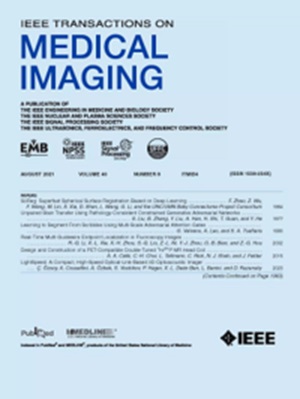A Learnable Counter-condition Analysis Framework for Functional Connectivity-based Neurological Disorder Diagnosis
IF 8.9
1区 医学
Q1 COMPUTER SCIENCE, INTERDISCIPLINARY APPLICATIONS
引用次数: 0
Abstract
To understand the biological characteristics of neurological disorders with functional connectivity (FC), recent studies have widely utilized deep learning-based models to identify the disease and conducted post-hoc analyses via explainable models to discover disease-related biomarkers. Most existing frameworks consist of three stages, namely, feature selection, feature extraction for classification, and analysis, where each stage is implemented separately. However, if the results at each stage lack reliability, it can cause misdiagnosis and incorrect analysis in afterward stages. In this study, we propose a novel unified framework that systemically integrates diagnoses (i.e., feature selection and feature extraction) and explanations. Notably, we devised an adaptive attention network as a feature selection approach to identify individual-specific disease-related connections. We also propose a functional network relational encoder that summarizes the global topological properties of FC by learning the inter-network relations without pre-defined edges between functional networks. Last but not least, our framework provides a novel explanatory power for neuroscientific interpretation, also termed counter-condition analysis. We simulated the FC that reverses the diagnostic information (i.e., counter-condition FC): converting a normal brain to be abnormal and vice versa. We validated the effectiveness of our framework by using two large resting-state functional magnetic resonance imaging (fMRI) datasets, Autism Brain Imaging Data Exchange (ABIDE) and REST-meta-MDD, and demonstrated that our framework outperforms other competing methods for disease identification. Furthermore, we analyzed the disease-related neurological patterns based on counter-condition analysis.基于功能连接的神经疾病诊断的可学习反条件分析框架
为了通过功能连接(FC)了解神经系统疾病的生物学特征,近年来的研究广泛利用基于深度学习的模型来识别疾病,并通过可解释模型进行事后分析,以发现与疾病相关的生物标记物。现有框架大多包括三个阶段,即特征选择、特征提取分类和分析,其中每个阶段都是单独实现的。然而,如果每个阶段的结果缺乏可靠性,就会导致后面阶段的误诊和错误分析。在本研究中,我们提出了一个新颖的统一框架,系统地整合了诊断(即特征选择和特征提取)和解释。值得注意的是,我们设计了一种自适应注意力网络作为特征选择方法,以识别个体特异性疾病相关连接。我们还提出了一种功能网络关系编码器,该编码器通过学习功能网络之间的网络关系来总结功能网络的全局拓扑特性,而无需预先定义功能网络之间的边缘。最后但并非最不重要的一点是,我们的框架为神经科学解释提供了一种新的解释能力,也称为反条件分析。我们模拟了反转诊断信息的功能网络(即反条件功能网络):将正常大脑转换为异常大脑,反之亦然。我们利用两个大型静息态功能磁共振成像(fMRI)数据集--自闭症脑成像数据交换(ABIDE)和 REST-meta-MDD 验证了我们框架的有效性,并证明我们的框架在疾病识别方面优于其他竞争方法。此外,我们还基于反条件分析法分析了与疾病相关的神经模式。
本文章由计算机程序翻译,如有差异,请以英文原文为准。
求助全文
约1分钟内获得全文
求助全文
来源期刊

IEEE Transactions on Medical Imaging
医学-成像科学与照相技术
CiteScore
21.80
自引率
5.70%
发文量
637
审稿时长
5.6 months
期刊介绍:
The IEEE Transactions on Medical Imaging (T-MI) is a journal that welcomes the submission of manuscripts focusing on various aspects of medical imaging. The journal encourages the exploration of body structure, morphology, and function through different imaging techniques, including ultrasound, X-rays, magnetic resonance, radionuclides, microwaves, and optical methods. It also promotes contributions related to cell and molecular imaging, as well as all forms of microscopy.
T-MI publishes original research papers that cover a wide range of topics, including but not limited to novel acquisition techniques, medical image processing and analysis, visualization and performance, pattern recognition, machine learning, and other related methods. The journal particularly encourages highly technical studies that offer new perspectives. By emphasizing the unification of medicine, biology, and imaging, T-MI seeks to bridge the gap between instrumentation, hardware, software, mathematics, physics, biology, and medicine by introducing new analysis methods.
While the journal welcomes strong application papers that describe novel methods, it directs papers that focus solely on important applications using medically adopted or well-established methods without significant innovation in methodology to other journals. T-MI is indexed in Pubmed® and Medline®, which are products of the United States National Library of Medicine.
 求助内容:
求助内容: 应助结果提醒方式:
应助结果提醒方式:


